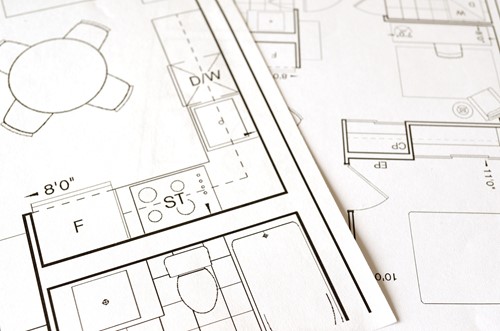
It may come as something of a surprise to prospective home buyers and contractors, but the open floor plan was popularized as far back as the 1950s. The open floor plan boom took off during the 1990s, and that’s when it evolved into a new construction norm.
By its very nature, the open floor plan reduces many of the accessibility impediments found in traditional homes that emphasize separated rooms and sometimes narrow doorways. In terms of new construction homes improving accessibility for people who use wheelchairs, walkers or have growing physical limitations, these are ways open floor plans can be modified to increase accessibility and quality of life further.
It’s essential to understand the open floor plan through a lens of accessibility. Although new construction homes are typically exempt from Americans with Disabilities Act (ADA) regulations, elements that improve accessibility also tend to enhance the enjoyment of living spaces. Layouts that merge rooms eliminate things like door thresholds and tight spaces, among others. These are three popular open floor plans that increase accessibility in this fashion.
Merging rooms in a new home design only increases accessibility. Given that new residential property owners want higher resale values and better quality of life experiences, these layouts make sense.
The basic open layout can be a jumping-off point for more robust accessibility. Many are designed with little consideration given to the physical limitations of our valued community members. By rethinking living spaces in terms of accessible use, simple changes can be integrated that deliver substantial benefits.
Open floor plans still rank among the most popular new construction layouts used today. They are inherently accessible due to the elimination of walls and doors found in other designs. With a few cost-effective modifications, an open floor plan home has the potential to become fully accessible.

Meet Kimberly Jokela:
With a genuine passion in people Kimberly loves helping her clients make their real estate dreams or needs come to life! Specializing in Luxury, Vacation, Retirement or Investment properties.
Born and raised in the midwest in a family with a strong work ethic, filled with creativity & dedication.
Her determination lead her to attend college at the "Philadelphia Performing Arts" where she had the opportunity to follow her passion in the Arts & to travel. Living in California with her husband Rick for 15 years together they built a successful business. After the birth of her beautiful daughter Brittany, seeking a "small town” coastal lifestyle, they took a trip to Naples Florida & fell in love with all it has to offer and made the jump!
With now over 17 years experience as a licensed Realtor serving Naples, Bonita Springs, Marco Island, Estero & Fort Myers.
A great listener, negotiator & connector, Kimberly is dedicated to helping her clients looking to BUY their ideal Florida property!
Her warm & friendly personality is present in everything she does on her clients behalf!
Kimberly’s creativity & "out of the box" thinking gives her clients the extra leverage they need when SELLING a property.
Her well organized marketing includes professionally produced photography, video, drone imagery, media presentation in print, numerous online websites & social media!